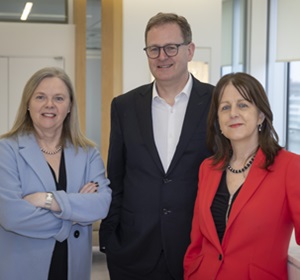The docklands area has even become internationally known as Dublin’s “Silicon Docks”, thanks to the arrival of so many leading technology companies, such as Google, Facebook and ancestry.com.
Many of the new buildings at Grand Canal Docks were completed just as the 2007 financial crisis hit Ireland. This meant that many of these high-end buildings stood empty in the period of economic uncertainty that followed. Now, international investors are swooping in to buy prime office space in what is one of the most exciting technology and business hubs in Europe. As someone who works in the docklands, it has been a real pleasure to see these buildings fill up with bright and enthusiastic workers in recent times.
Soon, we may see the cranes return as construction starts in earnest, to head off the predicted shortfalls in prime Dublin office space expected from early 2015. In November 2013, a new fast-track planning scheme was approved by Dublin City Council to allow for docklands buildings of up to 22 floors in height – 50% higher than Dublin’s tallest building. The new docklands strategic development zone will give council planners the power to make decisions that cannot be appealed to An Bord Pleanála, ensuring a minimum of delay for developers. Hopefully, Dublin City Council will also be cognisant of the importance of lessening financial obstacles to development, such as the onerous planning contributions which have stymied development elsewhere in the city.
The docklands strategic development zone represents the first major planning initiative since the 2012 decision to wind up the Docklands Authority, but to retain an appropriate fast track planning framework to complete the Docklands project. Dublin City Council, which is taking over the Docklands Authority’s powers, is determined to encourage the continued development of the 66 hectares, north and south of the river, that comprise the new planning zone. The plan identifies five specific development hubs: Spencer Dock, Point Village, Grand Canal Dock, Britain Quay and Boland’s Mills. One third of the overall docklands area – 22 hectares - is ready to be developed. Buildings left uncompleted since the financial crisis are now due for completion. Most notably, the former Anglo Irish Bank building, the unfinished skeleton of which became an icon of the financial crisis, is now due to be finished by its new owner, the Central Bank.
The docklands is also already a success as a residential and recreational area. Mixed-use planning has ensured that the area remains lively by night, with concerts and events in the Bord Gais Theatre and O2 arena, to complement the buzz of the restaurants and the new docklands communities. Dublin now has new landmarks, in the Samuel Beckett Bridge and the National Convention Centre.
The redevelopment of Dublin’s docklands began tentatively in 1987 with the introduction of legislation to encourage the development of the International Financial Services Centre. By the 30th anniversary of this historic initiative in 2017, the entire Dublin docklands area will have changed beyond recognition. Where once there were only coal-yards and derelict warehouses, sleek, modern buildings and bustling streetscapes have arisen. What was once a symbol of industrial decline, is now the powerhouse of the Irish economy and one of the most dynamic global hubs for international business, technology and financial services. Already, the IFSC is host to over 300 leading financial institutions, employing some 18,000 people. The future is bright for Dublin’s docklands.
By Sharon Daly – Head of Matheson’s Commercial Litigation and Dispute Resolution Department






